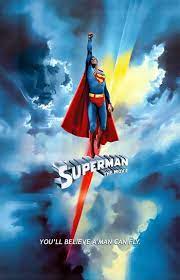
Look up the word Iconic in the dictionary and there’s a picture of Superman. Sometimes it’s him standing proudly with his cape fluttering like the American flag behind him, and sometimes it’s him ripping off his shirt on the run (Does he sew back his buttons at super-speed later on? I’ve always wondered), and sometimes it’s him tossing a green sedan like on the cover of Action Comics #1 (June 1938) where it all began.
Creators Jerry Siegel and Joe Shuster pretty much set down all the tropes of Superman in the beginning. Kal-El’s father, warned that the planet of Krypton was about to be destroyed, placed his son in a rocket and sent it to Earth. The child was discovered by stereotypical American Midwest good folks Jonathan and Martha Kent, who called him Clark. Like Zorro and the Phantom, he wore a costume and took on an unthreatening alias--his as a reporter in the City of Metropolis. The supporting characters of his love-interest Lois Lane, boss Perry White, and friend Jimmy Olsen, the mad scientist and alien enemies, and his catalog of supernatural powers were all created in the early comics. He is the archetype of every superhero that followed.
There was a radio show from 1940 to 1951, a Tony-nominated Broadway play, a series of animated shorts, more serials beginning in 1948 (including the most profitable one ever), a feature film called Superman and the Mole Men starring George Reeves, who also starred in the iconic TV show from 1952 to 1958, various animated shows, and so on. Lois and Clark and Smallville came later, and now there are video games.
Meanwhile, there were comic-book spinoffs about Superboy, Supergirl, and his dog Krypto. There were constant lawsuits about his imitators, including the most obvious copy Captain Marvel. In 1992, he died, which was a shocking development, and for a time he was replaced by copies made of various materials. Much has been made of the fact that Kal-El can be taken to mean Voice of God, and his origin story is similar to the birth of Moses. His original writers and artists were mostly Jewish, and to top it all off, stories about him were banned by the Nazis. In return, he and his friends and competitors fought for the Allies in World War II.
Superheroes come in pairs, one light and one dark like salt and pepper—Superman and Batman, Captain America and Tony Stark, Cyclops and Wolverine. This most significant movie emphasized his boy-scout nature by the casting of Christopher Reeve. It became the quintessential movie about Superman, and nothing has replaced it.
The film follows the comic book story quite faithfully at first. The planet Krypton is about to be destroyed by the supernova of its red supergiant sun. Jor-El (Marlon Brando) sends his infant son Kal-El in a spaceship to Earth, where he will possess great powers on the low-gravity planet orbiting the yellow sun. He lands in Smallville, Kansas, is found and taken in by Jonathan and Martha Kent (Glenn Ford and Phyllis Thaxter), who name him Clark and raise him as their own. Wisely, they keep his powers a secret.
After Pa Kent’s death, Clark hears a psychic call and discovers a green glowing crystal in his childhood spaceship. It sends him to a Fortress of Solitude in the Arctic, a bit of Krypton in the ice. Jor-El’s hologram explains his true origin and educates him in what he has to know. Twelve years later, he leaves with a blue and red suit emblazoned with what we thought was the letter S but is really the House of El family crest. To keep abreast of events on Earth, he becomes a reporter for the Daily Planet and meets Lois Lane (Margot Kidder). The cute meet is him catching her in a helicopter mishap and then catching the helicopter with his other hand, which wows the crowd below. He proceeds to stop a jewel robbery, captures fleeing criminals, rescues a cat from a tree, and saves Air Force One. In a charming conversation, he is interviewed by Lois and flies her over New York. She calls him Superman in the Press.
Criminal genius Lex Luthor (Gene Hackman) arranges for two missiles to strike the San Andreas fault and cause California to fall into the sea, increasing the value of his desert land. He has a bit of matter from Krypton which he believes is radioactive to Superman. He uses it to make Superman weak as a kitten and forces him to watch another missile launched at Hackensack, New Jersey.
But Lex Luthor’s girlfriend (Valerie Perrine) knows that her mother lives in Hackensack. While Superman is left to die, she helps free him if he will promise to save Hackensack first. He arrives too late to save California from a major earthquake, which he mitigates somewhat, but Lois Lane is killed. Devastated, he flies the wrong way round the Earth so fast that the planet rotates the other way, turning back Time. I’m sorry, what was that? No, everyone on Earth is not killed in massive earthquakes and tidal waves. Instead, Lois Lane comes back from the dead.
The movie featured some brilliant actors, but most of the charm was created by Margot Kidder, who beat out a hundred actresses for the role of Lois Lane, and of course Christopher Reeve, who beat out two hundred actors, including Al Pacino, James Caan, Steve McQueen, Clint Eastwood, Dustin Hoffman, Robert Redford, Burt Reynolds, Sly Stallone, Paul Newman, Bruce Jenner, Neil Diamond, Arnold Schwarzenegger, James Caan, James Brolin, Lyle Waggoner, Christopher Walken, Nick Nolte, Jon Voigt, Kris Kristofferson, Charles Bronson, and Muhammad Ali. It boggles the mind. Now it’s hard to believe anyone but Christopher Reeve in that role. At first, he was considered too unknown and too skinny. David Prowse (Darth Vader), who also wanted the role, bulked him up from 170 to 212 pounds. At one point, Harrison Ford was considered for Superman and Carrie Fisher for Lois Lane.
Francis Ford Coppola, William Friedkin, Richard Lester, and Sam Peckinpah were considered for director, but Richard Donner was chosen. Steven Spielberg was considered as well, but they waited to see how his big fish movie did and by then he was deep into Close Encounters. But they did hire John Williams to write the music when Jerry Goldsmith couldn’t do it, which was a brilliant move. Brando could not work in Italy because Last Tango in Paris was considered a sex-crime there. He sued Warner Brothers for 50 million dollars over his role, which could not then be used in Superman II. Donner cut the camp (mostly) out of the script and took the story seriously. He got Tom Mankiewicz to rewrite the script, but the Writers’ Guild refused to credit his work. Christopher Reeve studied under John Houseman at the Julian School of Drama.
According to Roger Moore, Christopher Reeve would walk through the Pinewood Studios canteen in full Superman costume with swooning women in his wake. When he did it dressed as Clark Kent, nobody noticed. Clark Kent and Superman parted their hair on opposite sides. Christopher Reeve based Clark on Cary Grant in Bringing Up Baby. He was an excellent hang-glider and used that skill in the flying scenes. The part of Kansas was played by Alberta. Margot Kidder spoke hilariously about all the high-level corporate discussions about Superman’s package. Filming was supposed to take eight months but took nineteen. The falling helicopter alone took six months. The look of Smallville was based on the films of John Ford and the paintings of Norman Rockwell, and John Williams’ music for those scenes has echoes of Aaron Copland.
The special effects were cutting edge for the time, especially the flying, which had to be believable. The three acts of the movie, taking place on Krypton, in Kansas, and in Metropolis, follow patterns in Joseph Campbell’s Hero’s Journey, not to mention the story of Jesus Christ. The movie was a great hit. Even Jerry Siegel and Joe Shuster loved it. It was nominated for three Oscars and received a special achievement Oscar for its visual effects. It won a Hugo and a Saturn. The original plan had been to make Superman II at the same time, but they decided to wait and see. Now, Superman II was a go. Many people think that Superman, Star Wars, and Close Encounters created the SF film mania in the Eighties.
